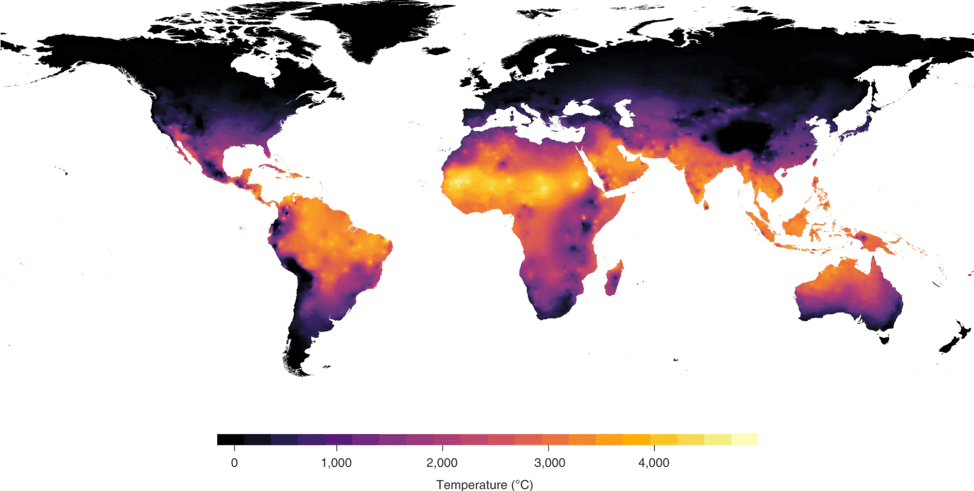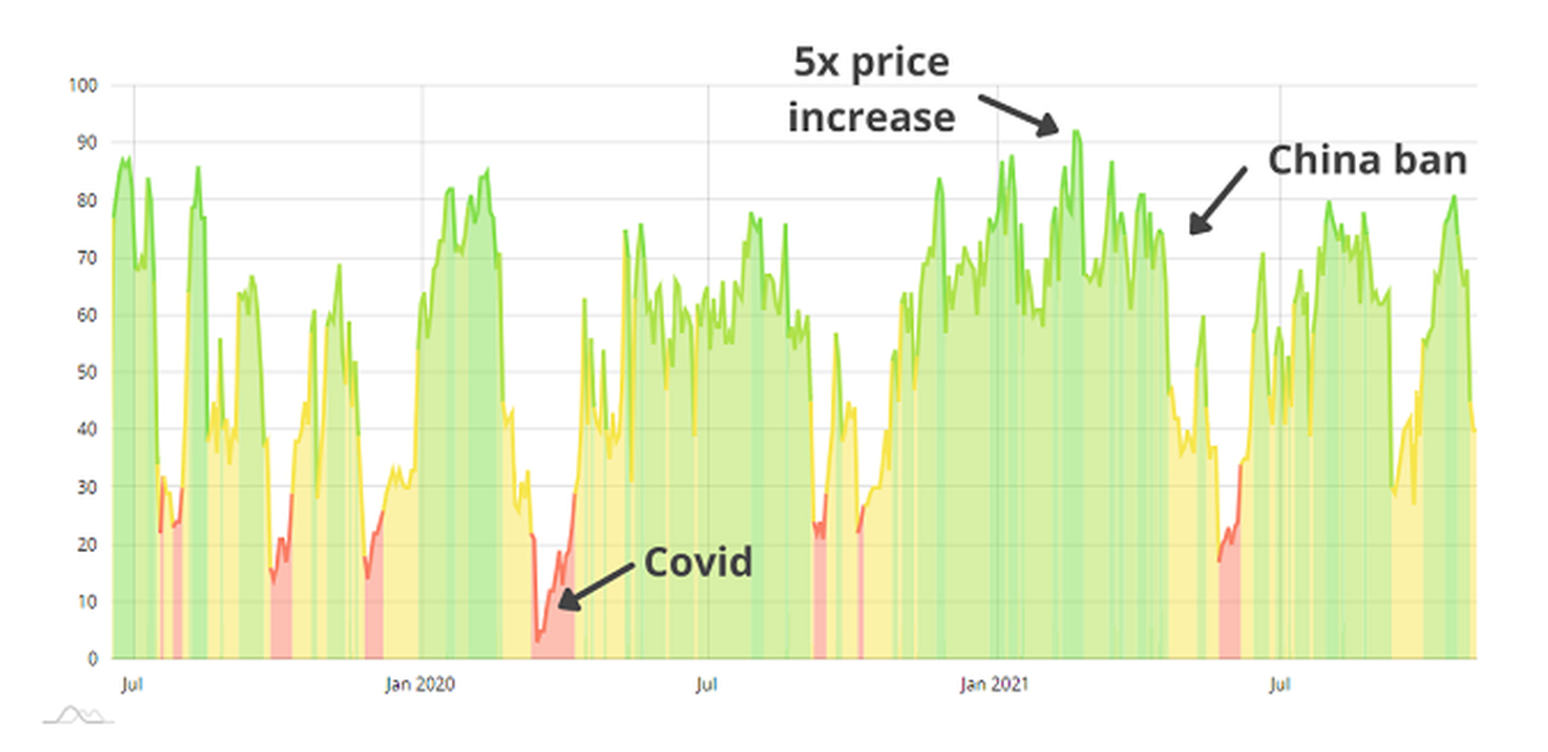At the turn of the century, printing books and newspapers in the New York area during the hot and humid summers was near impossible. The pages would become warped and shriveled, and the ink would often smear. Attempting to solve this problem, the Sackett-Wilhelms Lithographing & Publishing Company hired inventor Willis Carrier in 1902 to create a device that would control the temperature and humidity of their printing plant. Carrier did just that, and since then, air conditioning has reshaped modern life. The innovation of air conditioning has made it possible to manufacture and distribute items from textiles to chocolates regardless of the local climate, and introducing the technology into homes and businesses allowed populations in the American South and West to grow rapidly. Air conditioning provides a haven during some of the hottest summer days, increases worker productivity, and even protects our health from heat-related diseases on particularly hot days.
But this technology also uses a huge amount of electricity and relies on chemicals that produce powerful greenhouse gases. Unfortunately, our efforts to stay cool have contributed to making our world hotter through climate change. But recent research can inform efforts to reduce and offset the negative impacts of air conditioning, as well as provide technological solutions to make the technology more climate-friendly.
Air conditioning is reaching new populations
In recent years, air conditioner use has been on the rise in developing countries with warm climates and growing economies. Researchers who study energy markets estimate that there is vast potential for growth in air conditioning markets in countries with huge populations in blistering hot climates. Their estimates show that places like India, China, Indonesia, Nigeria, Pakistan, and others all have as much or more heat exposure than the US. As these countries become wealthier, and electricity becomes more widely available, air conditioning will also become accessible in more homes. Each of these countries could eventually require just as much energy for air conditioning as the US.

Source: Biardeau, Davis, and Gertler et al., Nat Sustain 2020.
Widespread access to air conditioning around the world will come with mixed blessings. On the bright side, workers are often more productive when their workplaces are at a comfortable temperature. Access to air conditioning protects against heat-related diseases, including heat stroke, heat cramps, and heat exhaustion. A study estimated that heat-related deaths have been cut by 80% in the US since 1960. Cooling indoor spaces in developing countries will save even more lives by protecting against heat-related diseases, as well as provide relief for many in the world’s hottest places as global warming makes them even hotter. But such relief will require much more electricity.
Air conditioning requires a substantial amount of electricity. A home air conditioning unit uses about 20 times the electricity of a ceiling fan. About 17% of residential electricity use in the US, and 10% of global total electricity usage goes to air conditioning. Bringing cooling technology to developing countries would lead to a huge increase in electricity consumption globally.
If electricity usage were the only issue with cooling, the problem could be addressed by sourcing more electricity from clean power sources like wind and solar. But air conditioning also depends on a major source of greenhouse gases – refrigerants.
Making refrigerants clean
Air conditioners work by alternately pressurizing and depressurizing chemicals known as refrigerants, and cycling them through thin coiled pipes to move heat out of a room, making the air inside of the room cool.
The most commonly used refrigerants are known as hydrofluorocarbons (HFCs), which become potent greenhouse gases when they escape from appliances through leaks and improper disposal. HFCs range from hundreds to thousands of times more potent than carbon dioxide in their effect on global warming.
But there are alternatives to HFCs. Ammonia and carbon dioxide can be used as refrigerants in air conditioners, and have a much lower impact on the climate. Some of the technologies that use these lower-impact refrigerants are even more energy efficient than the air conditioners commonly used now, and would use less electricity. Scientists project that phasing out HFCs could prevent around 0.1°C of warming of the earth of the projected 2°C warming by 2050.
But ammonia and carbon dioxide do have drawbacks that have prevented them from becoming the most widely used refrigerants. Ammonia is toxic and can harm or even kill people when it reaches high enough concentrations in the air. These risks can be mitigated with regular maintenance and when personnel are adequately trained, but the risks still remain. Carbon dioxide on the other hand is not toxic, at least in the amounts that it would be used as a refrigerant for air conditioning. But it could be more costly to put into practice due to its chemical properties, and still involves risks. Carbon dioxide has a higher critical pressure than HFCs or ammonia, which means higher pressure would be needed to use it in air conditioners. Air conditioners that use such high pressure could be less safe or more expensive to manufacture. However there are efforts to optimize technology using each of these refrigerants, making them more safe.
Although transitioning away from HFCs might not be trivial, it would not be the first time that a class of refrigerants has been phased out because of their harmful effects on the environment. Before HFCs were primarily used in air conditioners and other cooling technologies, chlorofluorocarbons or CFCs were most common. But CFCs were found to be depleting the ozone layer and were phased out in the early 1990s. HFCs may someday be phased out just as CFCs were.
By supporting the development and adoption of these new refrigerants, or other technologies that may come along, we can protect our climate while still holding onto the cooling technology that makes modern life possible, and may help us cope with the effects of climate change that we cannot prevent.
The post Air conditioning: a global contradiction appeared first on Illinois Science Council.







Leave a Comment